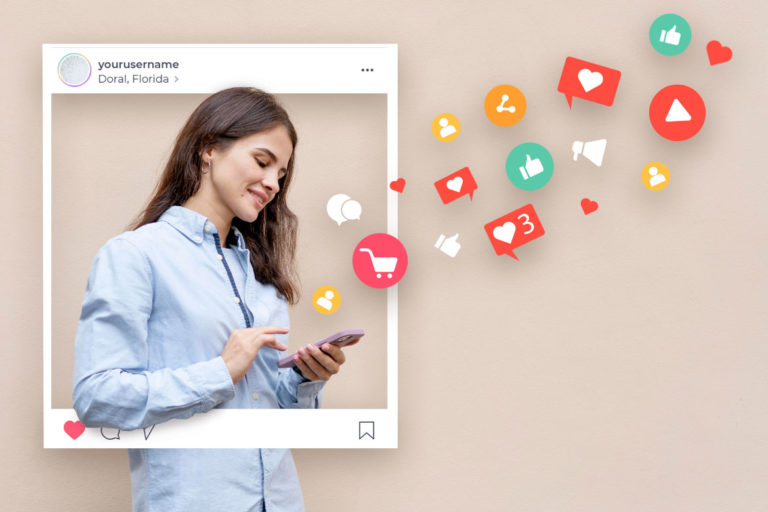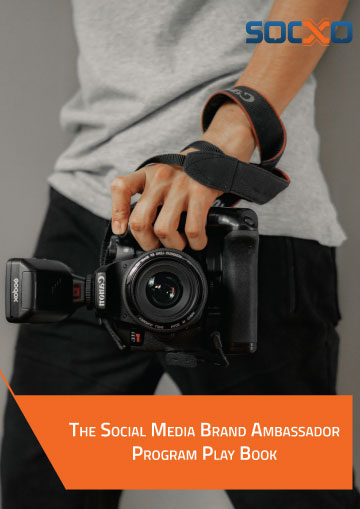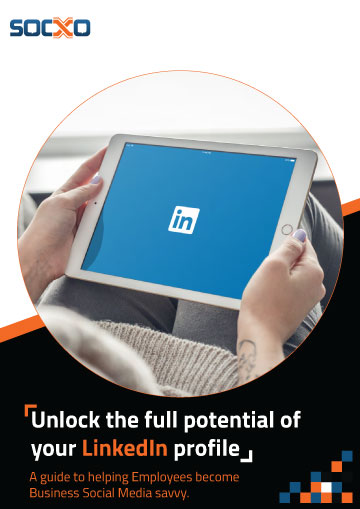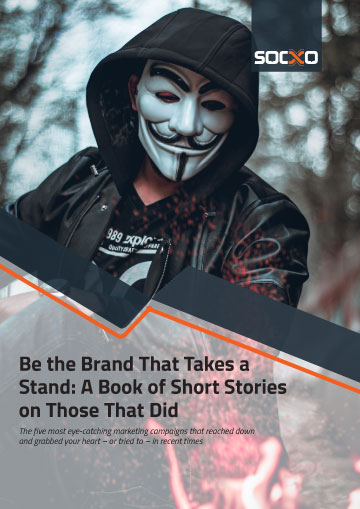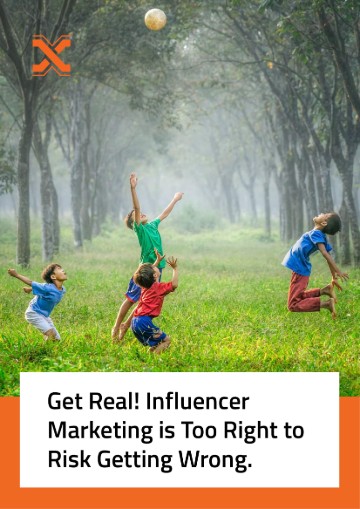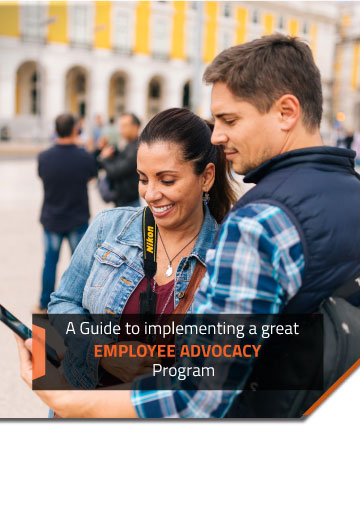
Introduction
In the world of digital marketing, content is king. But, if there was an emperor, it would be User-Generated Content!
Often, brands that are able to craft high-quality authentic content in large volumes tend to take the lead among competitors. However, creating large volumes of good content also demands large capital – something that many bootstrapped startups and SMBs fall short of.
If you are a business owner, you could easily relate to this. In addition to the cost of creating content, you also have to invest in creating content strategies and calendars. This can be quite tiring and resource-intensive.
To put this into perspective, companies tend to spend over 1/4th of their marketing budget solely on content creation!
Furthermore, it is difficult to clearly measure the ROI of every content piece you create. Hence, if you are not too careful, the process can leave your astray while you keep shelling out obnoxious amounts of money.
So, is there a workaround or a “hack” for smaller businesses to compete head-on with their larger counterparts while staying within the budget?
Yes, there is!
This is where User-Generated Content (UGC) comes into play.
If you want to skip to specific sections of interest, you can choose from the links below:
- What is User-Generated Content?
- Why You Need User-Generated Content in Your Business Today?
- 6 Ways to Weave UGC in Your Digital Marketing Strategy
- Ideas for User-Generated Content
- Examples of How Different Brands Are Using UGC and Their Impact
- Conclusion
What is User-Generated Content?

User-Generated Content refers to content created and shared by your users directly on your website or platform, with the purpose of engaging more people and strengthening brand engagement.
It is simply any type of content that has been created by the users or customers of a product or service.
It can come in many forms: user reviews on Amazon, Instagram selfies tagged with a brand’s name, tweets about new product launches – the possibilities are endless. The important thing to note here is that it is not promotional content created by the brand itself.
If planned and executed strategically, user-generated content or UGC can play a key role in helping businesses gain traffic and recognition in the digital space.
Why You Need User-Generated Content in Your Business Today?
1. Increase Word-of-Mouth Referrals
People trust people.
User-generated content is 35% more memorable than other media. With modern-day marketing being more consumer-centric, it is essential for businesses to provide customers the opportunity to engage, interact, and advocate with their marketing campaigns.
People these days tend to have “banner blindness”, where they ignore anything that remotely looks like an ad. UGC can help cut through this as this content isn’t the same as a traditional advertisement. Since the consumers find it more authentic, they will consume the content out of curiosity.
2. Helps Iterate Products
Let’s take a very popular form of User-Generated Content: unboxing videos. Users share a video of exactly what the experience is after using a brand new product. They show the packaging, the contents of the package, how to set up the product, its features, and much more.
They often also share videos comparing the products of different brands, to help consumers understand which one would better suit their needs. Content like this is incredibly useful to show consumers what your brand and product offer to them.
3. Potential Substitute for Influencer Marketing
Around 60% of consumers feel that they are getting influenced by the content shared by friends and family. It is easier for people to believe what their peers think about the product rather than celebrities or influencers who might be getting paid to endorse the product.
Influencers and the likes tend to lead a different lifestyle than what your consumers expect. So they might question if they even have the same needs that can be satisfied equally as well as an influencer claims. Whereas, when a peer provides content, they may be more certain about how well the product will work for them.
4. Increases Brand Awareness
User-generated content provides social proof of the quality, usefulness, and overall experience of your brand’s product. This will set up realistic expectations from your product, and customers gain confidence in joining the bandwagon of happy customers for your brand.
Marketing campaigns that encourage users to share their stories, videos, photos, etc. under the campaign’s hashtag can create a lot of brand awareness. People will use the hashtags to gain exposure themselves, in turn, the brand receives exposure through them.
5. Sparks Discussions Around Your Brand
Users want their voices to be heard. When they interact with brands, they feel an authentic connection. Especially when brands respond and acknowledge their content.
These connections can lead to long-lasting, loyal advocates for your brand. They will continue to share content and promote your products, share your campaigns, and continue as loyal customers. They can also be great for gaining insights on what more you could do as a brand to cater to more people.
6. Promotes the Product’s/Service’s Authenticity
User-generated contents are 3 times more authentic than those created by brands. That’s a significant, and valuable, difference.
UGC is more authentic as the users are advocating for a brand they have had positive experiences with. It allows your customers to provide unbiased opinions or views about your product or services. This in turn influences the purchasing decisions of those who view these posts or videos.
7. Taps Into Social Proof and Builds Trust in the Audience
Social proof is a concept that when a customer is trying to make a decision, they tend to take into account the decisions made by the people around them.
Especially when people are uncertain of a certain purchase, they tend to comb through user reviews or ask for recommendations from friends and family. Studies find that a third of millennials look to consumer opinions shared on social networks in the course of their product research.
UGC is exceptional at influencing purchasing decisions because it builds social trust amongst your audience, thus prompting them to make purchases from your brand.
8. Evokes Positivity and a Sense of Ownership
People tend to place greater value on items that they own. Its known as the endowment effect in cognitive psychology.
When your brand shares UGC, you would be making the customer feel good about their purchase and reinforces their sense of ownership of the product post-purchase. Thus, this can lead to happier and more satisfied customers after their buy and even become returning customers!
9. Increases Brand Advocacy
By putting the spotlight on customers, organizations can bank on them to turn into brand advocates i.e. the most active, engaging, and loyal fans of your brand!
In a recent study which wanted to find out what impact it has when a brand engages with a customers’ UGC — the results showed that it makes 53% of customers more likely to purchase from them again, 46% to recommend the brand, and over 45% to post content again! Thus, UGC is a splendid, ROI-intensive strategy.
Socxo is a platform that bridges the gap between businesses and humans to help companies to transform their employees and customers in Brand Advocates. In simpler words, Socxo turns your company into a celebrity that people love and can’t stop talking about on social media!
10. Forms a Loyal Community
When you provide a forum for your customers’ voices to be heard, you give them a reason to love your brand and by sharing your voice, you let them know that their appraisal of the purchase is actionable! This goes a long way in building a trustworthy relationship with your customers and fostering a loyal community of organic audiences.
11. Helps To Set Product/Service Feature Roadmaps
UGC can highlight the fresh and novel use cases for your product which can then be shared with other users. Further, it helps organizations gather what feature is most valuable to customers and curate a product/service roadmap ahead!
6 Ways to Weave UGC in Your Digital Marketing Strategy

1. Choosing the Most Impactful Digital Platforms
Which platform do your target consumers use the most? What kind of content will that platform support? Where would your advocates have the most influence?
You need to evaluate which platform can make the biggest difference for your brand. For example, Instagram is great for a visual impact. The use of repost, explore page, and hashtags can help expand the reach of your brand.
2. Humanize the Brand
When people think of brands, the idea is usually a faceless corporation that seeks to gain mutual benefits by providing products and services. It’s not really a concept that people can genuinely connect with. UGC helps humanize your brand.
When you show real people using and reviewing your product, it can help foster emotional connections with your consumers. It generates feelings of empathy, or even envy at wanting to share the experience. By influencing consumer emotions, you can boost their engagement and convert them into long-term patrons.
3. Hold Competitions
Thanks to the accessible nature of social media and smartphone cameras, we live in an age where photography and video contests can be leveraged for brand awareness. People desire to create art simply because they are passionate about it. Why not give them a little inspiration?
One of the most engaging ways to prompt users into creating content for you is through competitions. Decide what type of content you want to see: images, videos, dances, music, or anything else you’d like. You could also add the caveat of using a specific product if you want to promote that rather than the brand itself.
Sharing “success” stories, reviews, or testimonials with your brand can also be a basis for a contest. Remember, people are more likely to trust the words of someone similar to them.
The rewards for these competitions are usually giveaways, but they can also include discounts, merchandise, cash back, or other incentives that will draw in consumer interests.
4. Interact With the Audience And Make Them Feel Special
Being recognized by brands can be a delightful and surprising moment for consumers. Around 51% of consumers state that they are more likely to engage with a brand if their content has been shared on the brand’s page.
This can be further supplemented by creating a persona for your brand. It will help bring consistency to interactions across various platforms. Take the opportunity to give your brand a personality that people would like to know.
When you connect with advocates and consumers, you’re also building credibility. It will draw in more users and enhance the reputation of the brand.
5. Collaborate and Build a Community
The kind of exposure gained from being shared by a brand can help build a community among the users. This might inspire viral posts as people get together and share ideas. UGC is the key to building these relations and creating a captivating environment for your audience.
Let your brand show its human side. Have representatives at product launches to engage with customers. Answer questions your audience may have. Give recognition to people who have made an effort to support and empower your brand.
6. Amplify Opinions of Fans
UGC gives customers and fans a space to share their appraisals and opinions about your brand. This is a great way to amplify your customers’ and fans’ voices and grow as a powerful community.
A pro-tip to amplify fans’ opinions on social media is to prompt them to tag your brand on social media when they purchase from you.
In this way, you can feature such UGC on your brand’s social media handle effortlessly – thus, building a portfolio of reliable, real-time customer and fan appraisals on your brand. At the same time, you can build customer affinity for your brand and incentivize them to create and share more content in the future!
7. Rewards Programs
Remember that your customer is doing a willing gesture by creating UGC. They are impactful content in two ways: Firstly, they highlight the best features of the product that is most appealing to them. Secondly, they help the marketing team understand their perceptions of the product and accordingly make decisions based on this.
In this way, they signal that they are an active and loyal customer who can validate your products/services. At this juncture, it is essential to employ a few customer retention techniques such as rewards or loyalty programs to incentivize them to be part of your brand’s community while also boosting the customer lifetime value for your brand!
Ideas for User-Generated Content
1. Reviews
One of the most simple yet effective techniques of UGC is to allow customers who have bought your product to post product reviews and ratings.
With seventy percent of consumers trusting online peer reviews and recommendations more than professional content, reviews build credibility and trust among your brand’s audience.
Over 92 percent of online customers consider reviews when making a purchase, and with such a large percentage, you can’t afford to ignore them in your e-commerce store. Make sure to encourage audience participation through third-party services such as Google, Yelp, and Facebook, as well as direct reviews on your website.
2. Visual UGC
Visual UGC is the most common form of UGC and perhaps the most engaging. It is simply created when a customer posts a photo or video of the new product on social and e-commerce channels.
Prospects have different reasons to try out a product that they see someone using on social media, however, the power of UGC on purchasing decisions is abundantly clear! Visual UGC is 85 times more effective than studio-made or branded content in boosting conversion rates online!
3. Video Testimonials
Among visual UGC, the power of video form content cannot be more accentuated. According to research, customers that have an emotional connection to the business’s brand have a better lifetime value than the ordinary customer. And video-form content and testimonials offer just that!
While professional content is constrained by fixed views of what you think your users will find appealing about your product, UGC allows you to experiment in real-time with how your audience will utilize it!
Video sharing sites like Youtube (which has a monthly user population of 2 billion) and Instagram (which has a monthly user base of 1 billion) have become one of the best and most powerful ways to generate UGC.
4. Short-Form Video Content
72% of the customers prefer learning about a product or service through a video.
Short-form video content on platforms such as Youtube Shorts, Tiktok, Reels on Instagram has emerged as one of the best ways to boost brand recognition and awareness! While there is no universal duration of time for short-format videos, durations of 60, 30 and 20 seconds are easily digestible.
Short-form video content gives your brand a candid personality that makes it attractive for audiences to engage with your brand and even make purchases from you.
5. Blogging & Influencer Content
Social media platforms such as Instagram, Facebook are loaded with bloggers and influencers with specific niches and followings.
For instance, imagine your baby clothing brand being promoted and endorsed on social media by bloggers and mom-influencers. It would be no surprise that your brand will gain a good audience reach and drive sales.
Some of the most impactful forms of influencer content are “how-to” tutorials which can display your product’s best features which can evoke a sense of curiosity and desire to buy in your prospective customers.
6. Social Media Post
Social Media platforms witness over 45% of the world population engaging on their platforms daily. Over 68% of people take into account information on social media before making a purchasing decision, viewing them as authentic, real-time content.
The potential for a post to go viral is also higher than any branded content. It also sets a trend, and your brand might be remembered for it.
Take, for example, Coca-Cola’s Share A Coke campaign. It became a huge success overnight as users began sharing photos of their Coke cans across social media. People did not want to miss out on the craze, and joined the bandwagon. This became so successful that Coca-Cola offered customized cans for those who couldn’t find their names.
Thus, it comes as no surprise when it is said that social media posts are one of the most powerful and effective strategies for generating UGC.
Examples of How Different Brands Are Using UGC and Their Impact
Red Bull

You might have heard that a new record had been set for BASE jumping. Fred Feugen and Vincent Ruffet leapt off the tallest building in the world, Burj Khalifa, and set a new record at 828m. And guess who got to tag along in their success? Red Bull.
The energy drink brand is known for supporting and using its consumers’ feats and adventures to promote its products. The brand alignment is so clear, that when a person thinks of Red Bull, their second thought is “extreme sports”. The first thought is “gives you wings”.
You don’t need to get an adrenaline rush to get noticed by Red Bull. They’ve also held a contest for photography and videography called Red Bull Illume Image Quest. Adventure and action sports photographers can showcase their talents and compete for the best photo of the year. While there is a cash prize involved, the exposure and fame that comes from being a winner of this huge competition are priceless.
Although their products aren’t being displayed in the content, they stand to gain unparalleled advertising opportunities. Competitors and adventure sports enthusiasts practically promote the brand as they share their content with related hashtags, in the hopes of gaining the attention of Red Bull’s huge fanbase or the brand itself.
GoPro

Have you ever visited GoPro’s Instagram page? Most of their posts are content created by GoPro users. The brand leverages their consumers’ need to share their highlights captured on their GoPro cameras. They’ve taken advantage of “showing is better than telling”.
Since the content is being shot from the GoPro camera, the product itself isn’t visible in the content. Instead, the emphasis is on the use of the product. The features like stability, durability, and suitability to different conditions are highlighted by the user’s video.
GoPro too has incentivized UGC. They give out GoPro Awards to consumers who submit photos and videos to specific challenges on their page. Each challenge is defined by a theme or the prizes to be won. So far, GoPro gives out cash prizes, free gear, and free global exposure to the winners.
This kind of content also promotes the use of the GoPro App. Consumers can directly edit and upload photos from the GoPro camera through the app. By removing the need to connect to a laptop first, GoPro allows the consumers to share footage as soon as they can, conveniently.
No curated marketing tactic could have worked out better for a brand like GoPro. It has steadily built a vast community of adventurers and people who simply want to capture their fast-paced moments. The audience stands united over their similar passions and amazing content.
Conclusion
All in all, UGC must form a crucial part of your marketing arsenal. At the end of the day, it’s all about fostering an environment where people want to interact with your brand and talk about it with other people.
Not only does it make your consumers feel valued, but it also provides credibility and excitement to your brand. You also stand to gain limitless content to use for your marketing campaigns, at a fraction of the cost. If employed well, user-generated content can take your business’s marketing strategy to new heights!
User-Generated Content refers to content created and shared by your users directly on your website or platform, with the purpose of engaging more people and strengthening brand engagement. It is simply any type of content that has been created by the users or customers of a product or service.
It can come in many forms: user reviews on Amazon, Instagram selfies tagged with a brand’s name, tweets about new product launches – the possibilities are endless. The important thing to note here is that it is not promotional content created by the brand itself.




